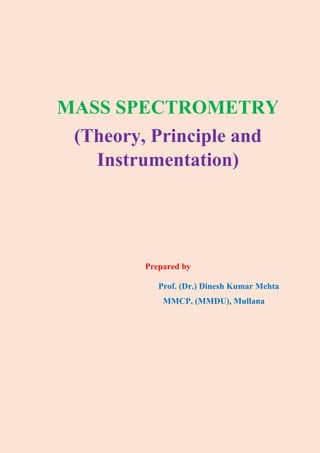Mass spectrometry is an analytical technique that determines molecular masses by calculating the deflection of charged particles in a magnetic field, and it provides detailed information using small sample amounts. It involves four key stages: ionization, acceleration, deflection, and detection, and produces a unique mass spectrum that acts as a chemical fingerprint for substances. Various methods of ionization, such as MALDI, and different mass analyzers are employed to analyze and identify compounds based on their mass-to-charge ratios.













